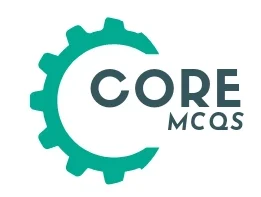Biology Chapter 4 Entry test MCQs
26. The basic structure of plasma membrane is provided by:
a. Cholesterols
b. Proteins
c. Phospholipids
d. Cytoskeleton
27. Taking in of solid particle by cell is called:
a. Pinocytosis
b. Phagocytosis
c. Endocytosis
d. Exocytosis
28. Self-cating ability of lysosomes is called:
a. Pinocytosis
b. Phagocytosis
c. Exocytosis
d. Autophagy
29. Passive processes for the movement of molecules across cell surface membrane are:
a. Pinocytosis and facilitated diffusion
b. Facilitated diffusion and osmosis
c. Osmosis and phagocytosis
d. Diffusion and exocytosis
30. The fluid mosaic model of cell membrane is:
a. Carbohydrate chains are attached with phospholipid bilayer
b. Protein layers having scattered phospholipids
c. In which protein molecules are free to move about in a fluid bilayer of phospholipid molecules
d. Phospholipid bilayer is enclosed in protein layer
31. Cell permeability and transport processes of cell membrane depend upon its component.
a. Polysaccharide
b. Phospholipid
c. Cellulose
d. Carbohydrate
32. According to the fluid mosaic model of cell membrane, which zone is embedded inside?
a. Hydrophilic
b. Hydrophobic
c. Filamentous
d. Globular
33. Which of the following is not the function of cell membrane?
a. Protection of cytoplasm
b. Regulating the passage of different molecules
c. Protein synthesis
d. Cellular communication e. Cellular transportation
34. When plant cell receives a signal for death, it commits suicide by rupturing:
a. Tonoplast
b. Nucleus
c. Chloroplast
d. Cell membrane
35. An enzyme that is attached to cell membrane of cell:
a. Succinate dehydrogenase
b. Adenylate cyclase
c. Glucokinase
d. Cytochrome oxidase
36. Which of the following is not associated with both prokaryotic and eukaryotic cell membrane?
a. DNA replication
b. Receptors
c. Antigens
d. Enzymes
Cytoplasm and Cell Organelles
37. Peripheral parts of the cell are often like:
a. Solid
b. Gel
c. Sol
d. None of these
38. It is false about cytoplasm of eukaryotic cell:
a. Site of glycogen storage
b. Glycolysis
c. Translation
d. Transcription
39. All of the following organelles contain DNA except:
a. Chloroplast
b. Ribosomes
c. Mitochondria
d. Nucleus
40. 405 is the smaller ribosomal sub-unit, associated with……………
a. C. botulimum
b. E. coli
c. T. pallidum
d. Yeast
41. Identify non-membranous organelle from the following:
a. Ribosome
b. Endoplasmic reticulum
c. Chloroplast
d. Nucleus
42. Ribosomes are tiny organelles, which are involved in the synthesis of:
a. RNA
b. Protein
c. Nucleosome
d. Nucleus
43. Which one of the following organelle is found in both prokaryotic and eukaryotic cells?
a. Endoplasmic Reticulum
b. Centriole
c. Ribosome
d. Nucleus
44. Ribosomes present in prokaryotes are:
a. 60S
b. 80S
c. 70S
d. 50S
45. Group of ribosomes attached to mRNA is called:
a. Polysome
b. Polyploid
c. Polysaccharide
d. Polynucleotide
46. Which of the following organelle consist of two subunits?
a. Mitochondria
b. Golgi body
c. Plastid
d. Ribosome
47. Site of protein synthesis in cell is:
a. Endoplasmic reticulum
b. Ribosome
c. Smooth endoplasmic reticulum
d. Nucleolus
48. Ribosomes are made up of……………and…………….
a. RNA and lipids
b. RNA and proteins
c. Proteins and carbohydrate
d. RNA and carbohydrates
49. The cytoplasmic organelle commonly found both in prokaryotes and eukaryotes is:
a. Mitochondria
b. Flagellum
c. Nucleoid
d. Ribosome
50. 70S sized ribosomes are found in the cells of:
a. Fungi
b. Algae
c. Bacteria
d. Protozoans
